TL;DR
- Mixing naproxen with alcohol raises the risk of stomach bleeding, ulcers, and kidney stress. The risk climbs with dose, age, and drinking amount.
- Golden rule: if you’re on naproxen today, skip alcohol. If you choose to drink, keep it light (1 drink), take naproxen with food, and space them by at least 12-24 hours.
- High‑risk groups (age 60+, prior ulcers/bleeds, blood thinners, steroids, SSRIs, kidney disease) should avoid the combo entirely.
- Planning to drink? Prefer non‑drug options or a short course of acetaminophen at safe doses if you’re not a heavy drinker or have liver disease.
- Red flags after mixing: black stools, vomiting blood, severe stomach pain, dizziness, fainting-seek urgent care.
You clicked because you want a clear answer: can you drink while taking naproxen without paying for it later? Here’s the straight talk: naproxen and alcohol don’t play nice, and the risk isn’t only about getting tipsy-it’s about stomach bleeding, kidney stress, blood pressure spikes, and worse if you’re in a higher‑risk group. I’ll give you simple rules that real people can follow, the timing that actually matters, safer swaps, and what to do if you already mixed them.
What happens when you mix naproxen with alcohol
Naproxen (Aleve, Naprosyn, Anaprox) is a nonsteroidal anti‑inflammatory drug (NSAID). It calms pain and inflammation by blocking COX enzymes. That same action makes your stomach lining more fragile and reduces platelets’ ability to form clots. Alcohol is also rough on the stomach lining. Stack them, and you raise the odds of a bleed. This is the main reason people get into trouble with naproxen and alcohol.
Here’s the short version of the physiology that matters:
- Stomach and gut: Both alcohol and naproxen irritate the mucosa. Naproxen also reduces protective prostaglandins. Result: higher chance of ulcers and bleeding.
- Clotting: Naproxen is mild on platelets compared with aspirin, but it still nudges bleeding risk up. Alcohol adds to that.
- Kidneys: NSAIDs can lower blood flow to the kidneys; alcohol can dehydrate you. Together, they can stress kidney function-more so in older adults or those with kidney or heart disease.
- Heart and blood pressure: Alcohol can push blood pressure up. NSAIDs can also raise blood pressure and carry cardiovascular warnings on their labels (FDA, 2024 update). If you’ve got hypertension or heart disease, the combo is a bad bet.
How big is the risk? Not the same for everyone. Case‑control data have shown roughly a 2-4× higher risk of upper GI bleeding with moderate to heavy alcohol intake alone, and 3-5× with routine NSAID use. Combine them, and some studies report a several‑fold jump (often cited in the 5-10× range in higher‑risk drinkers) compared with neither exposure. The American College of Gastroenterology’s guidance (2021-2022) flags NSAID use, alcohol, age 60+, a history of ulcers, H. pylori, and anticoagulants as major additive risks. That’s the evidence backdrop for the conservative advice you hear: avoid the combo.
One more wrinkle: if you take low‑dose aspirin for your heart, naproxen can interfere with aspirin’s antiplatelet effect if taken too close together, and adding alcohol piles on bleeding risk. This is a triple‑whammy zone; talk to your clinician about timing and whether naproxen is even appropriate for you.
Step‑by‑step: If you plan to drink, or already did
If you want practical rules you can actually follow, use these steps. They’re conservative, they match what major safety labels warn about, and they fit different scenarios.
First, know your dose and drink count:
- OTC naproxen: 220 mg tabs (Aleve). Typical dose: 220-440 mg, every 8-12 hours, max 660 mg/day unless a clinician says otherwise.
- Prescription naproxen: 375-500 mg tablets, sometimes twice daily, higher total daily dose and longer exposure.
- One “standard” drink (U.S.): 12 oz beer (5%), 5 oz wine (12%), or 1.5 oz liquor (40%). CDC/NIAAA define “binge” as 5+ drinks for men or 4+ for women in about 2 hours.
Now the rules.
- If you took naproxen today, the safest move is to skip alcohol entirely. Naproxen’s half‑life is long (~12-17 hours). Even if you “feel fine,” your stomach and kidneys are still under NSAID effects.
- If you still choose to drink: keep it to 1 standard drink, take naproxen with food, and space alcohol and naproxen by at least 12-24 hours. More spacing is better. For prescription‑strength dosing, avoid alcohol while you’re taking it.
- If you drank earlier and now need pain relief: prefer non‑drug options first (ice/heat, rest, fluids). If you must take something and you are not a heavy drinker or have liver disease, a small dose of acetaminophen can be considered after alcohol has cleared a bit-think 6+ hours after light drinking, max 1,000 mg per dose, and keep total under 3,000 mg for the day. Avoid acetaminophen entirely if you’ve had 3+ drinks that day or you drink heavily most days (FDA and NIAAA cautions).
- Had a big night (binge)? Skip all NSAIDs for at least 24 hours after the last drink. Rehydrate, eat, and reconsider pain meds the next day if symptoms persist.
- Red flags at any point-black/tarry stools, vomiting blood or “coffee grounds,” severe stomach pain, fainting, or chest pain-seek urgent care now. Don’t wait to “see if it passes.”
Timing cheat codes you can remember:
- OTC naproxen + a planned drink: dose naproxen in the morning, drink (if you choose) in the evening, or vice‑versa, and keep it to 1 drink. Still not risk‑free.
- After 2+ drinks: avoid naproxen until the next day. Your stomach is more vulnerable and you’re likely dehydrated.
- Over 60 or on blood thinners/steroids/SSRIs: don’t mix-full stop. Talk to your clinician about safer approaches.

Real‑world scenarios and safer swaps
Different nights call for different plans. Here are common scenarios and how to handle them.
Scenario 1: You’ve got a tension headache at 5 p.m. and dinner with drinks at 7 p.m.
- Try non‑drug first: water, a light snack, gentle neck/shoulder stretches, a brief walk.
- If you still need a med, a single small dose of acetaminophen can be reasonable if you plan on one drink and you’re not a heavy drinker or have liver disease. Keep the total under 3,000 mg that day.
- Avoid naproxen pre‑drinks. Consider taking it the next morning if you still hurt and you didn’t overdo alcohol.
Scenario 2: You took 440 mg naproxen at noon for a sprained ankle. Friends want to grab beers at 8 p.m.
- Best move: skip alcohol. Your body is still under naproxen’s effect.
- If you still go, make it one drink, have food, and hydrate. Don’t take another naproxen dose that night.
- Use ice and elevation for the ankle; a compression sleeve helps more than you’d think.
Scenario 3: You binged last night and woke up with a pounding headache.
- Don’t reach for naproxen, ibuprofen, or aspirin. Your stomach is primed to bleed.
- Rehydrate with water or an electrolyte drink, eat a bland meal, sleep. If you need a pill and you’re not a heavy drinker generally, a small acetaminophen dose later in the day can be acceptable. If you drink heavily most days or have liver disease, skip acetaminophen and stick with non‑drug care.
Scenario 4: Ongoing back pain and you usually take prescription naproxen 500 mg twice daily. You’ve got a wedding this weekend.
- Talk to your clinician ahead of time. For many people, a temporary switch to a topical NSAID (like diclofenac 1% gel) plus non‑drug measures is safer for an event with alcohol.
- If you stay on oral naproxen, plan to avoid alcohol. Consider a PPI (like omeprazole) if your clinician recommends GI protection; it reduces ulcer risk but does not make mixing with alcohol safe.
Safer swaps and strategies:
- Topical NSAIDs: Diclofenac gel delivers pain relief to joints with minimal systemic exposure. Much friendlier if you’ll drink.
- Acetaminophen: Works for headaches and many aches, but the liver is the limiter. Safe for light or occasional drinkers at reduced daily maximums. Not for heavy drinkers or those with liver disease.
- Non‑drug tools: Ice/heat cycles, compression, rest, gentle mobility, massage, magnesium for muscle cramps (if you’re not on contraindicated meds), and sleep. Boring, but they work and carry no bleeding risk.
Checklists, decision tree, and risk table
Quick checklist: Should I avoid mixing today?
- Age 60 or older
- History of ulcers, GI bleeding, or H. pylori
- Taking blood thinners (warfarin, apixaban, rivaroxaban), antiplatelets (clopidogrel), or daily aspirin
- On steroids (prednisone) or SSRIs/SNRIs (sertraline, fluoxetine, venlafaxine, etc.)
- Kidney disease, heart failure, uncontrolled blood pressure
- Heavy drinking (3+ drinks a day or frequent binges)
- High‑dose or long‑term naproxen
If you checked any box, don’t mix. If you checked more than one, consider avoiding alcohol entirely while on NSAIDs and ask your clinician about GI protection or alternative pain plans.
Decision tree (plain language):
- Do you plan to drink tonight? If yes → Can you skip oral NSAIDs? If yes → Use topical NSAID/non‑drug care. If no → Limit to 1 drink, space 12-24 hours from your last naproxen dose, take with food, or better yet, reschedule the drink.
- Did you already drink 2+ drinks? If yes → No naproxen until tomorrow. Rehydrate, eat, rest.
- Are you 60+, on blood thinners, or have a past ulcer? If yes → No mixing. Consider a different plan entirely.
| Alcohol today | Naproxen dose | Relative risk signal | Suggested action |
|---|---|---|---|
| 0 drinks | OTC 220-440 mg/day | Baseline NSAID risk | Take with food. Watch for stomach symptoms. |
| 1 drink with food | OTC 220-440 mg/day | Low to moderate | Space 12-24h between dose and drink if possible. Avoid repeat dosing that day. |
| 2-3 drinks | OTC or Rx | Moderate to high | Avoid naproxen until next day. Rehydrate, eat. Use non‑drug or topical options. |
| Binge (4-5+ drinks in ~2h) | Any | High | Skip naproxen for at least 24h. If stomach pain or black stools appear, seek care. |
| Any alcohol | Rx 500 mg twice daily | High | Avoid alcohol while on Rx dosing. Ask about PPI protection if long‑term. |
| Any alcohol | With blood thinners/SSRIs/steroids | Very high | Do not mix. Discuss alternatives with your clinician. |
Why the caution is this strong: FDA naproxen labeling (revised through 2024) warns about GI bleeding, kidney injury, and CV risks. The American College of Gastroenterology recommends minimizing NSAIDs in those with GI risk and using PPIs for protection when NSAIDs are unavoidable. The CDC and NIAAA define safe drinking limits and highlight how binge drinking multiplies harm. These aren’t scare tactics-they’re the guardrails.

Mini‑FAQ and emergency signs
Can I have one glass of wine with naproxen?
Best advice: don’t mix. If you still choose to, limit to one drink, have it with food, and space it 12-24 hours from your last naproxen dose. If you’re 60+ or have any GI/kidney/bleeding risk, skip alcohol altogether while taking naproxen.
How long should I wait after drinking to take naproxen?
After 1 drink, aim for at least 12 hours. After 2+ drinks, wait until the next day. After a binge, give it 24 hours, rehydrate, and eat before taking any NSAID.
Is Aleve different from Naprosyn?
Same active drug (naproxen). Aleve is naproxen sodium 220 mg (OTC), Naprosyn is typically higher‑dose prescription. Higher doses mean more risk when alcohol is involved.
Does taking naproxen with food or milk make it safe to drink?
Food may reduce stomach irritation, but it does not erase bleeding risk. Don’t use food as a permission slip to mix.
Enteric‑coated naproxen-safer with alcohol?
Coatings can reduce heartburn. They don’t prevent deeper GI injury or bleeding. Risk remains.
Beer vs wine vs spirits-does type matter?
Risk tracks with ethanol dose, not the label. One standard drink is one standard drink.
What if I’m on daily aspirin for my heart?
Adding naproxen can block aspirin’s heart‑protective effect if timed poorly, and bleeding risk rises-more so with alcohol. You need personalized timing advice from your clinician; often you’ll be told to avoid naproxen.
Pregnant or trying to conceive?
Avoid naproxen in the third trimester; it can affect the fetal heart (ductus arteriosus). Alcohol is also not recommended in pregnancy. Don’t mix-talk to your OB about pain options.
Breastfeeding?
Small amounts of naproxen pass into milk and it has a long half‑life; many clinicians prefer ibuprofen if an NSAID is needed. Alcohol timing matters for nursing. Get individualized guidance.
What about taking a PPI (like omeprazole) with naproxen-does that make drinking okay?
PPIs lower ulcer risk while on NSAIDs, but they’re not a safety net for mixing with alcohol. Think of them as seatbelts, not invincibility cloaks.
How about ibuprofen instead of naproxen on drinking days?
Ibuprofen has a shorter half‑life, but it’s still an NSAID with similar GI bleeding risk. If you must use something near alcohol exposure, a single low dose of ibuprofen is sometimes chosen because it wears off faster-but it’s still not “safe.” Non‑drug options or topical NSAIDs are better.
What to do if you already mixed them:
- Stop alcohol and don’t take more naproxen that day.
- Eat a real meal and hydrate.
- Avoid other NSAIDs or aspirin. Don’t stack painkillers.
- Watch for warning signs for 24-48 hours.
- Seek urgent care if you notice black stools, blood in vomit, severe stomach pain, dizziness/fainting, chest pain, or shortness of breath.
Red‑flag symptoms (don’t wait):
- Black, tarry stools or bright red blood from the rectum
- Vomiting blood or material that looks like coffee grounds
- Severe, constant stomach pain
- Lightheadedness, fainting, fast heartbeat
- Little to no urine for 8+ hours, swelling in legs/feet (possible kidney issue)
Why you can trust this: the safety points here match the FDA naproxen label (through 2024), ACG guidance on NSAID‑related GI injury (2021-2022), and CDC/NIAAA definitions of drinking levels. PPIs reducing NSAID ulcer risk by about half is supported by meta‑analyses and Cochrane reviews. Alcohol’s effect on blood pressure is well documented by the American Heart Association (2023). If your personal situation is complex-blood thinners, prior bleeds, kidney disease-get individualized advice.
Quick recap you can act on today:
- No mixing is best. If you choose to drink, keep it to one, eat, hydrate, and separate by 12-24 hours.
- After 2+ drinks, skip naproxen until tomorrow. After a binge, wait 24 hours.
- Use topical NSAIDs and non‑drug tools around drinking events. Consider acetaminophen cautiously if you’re not a heavy drinker.
- High‑risk? Don’t mix-period. Ask about GI protection or alternate pain plans.
- See care fast for any bleeding signs, severe pain, or fainting.
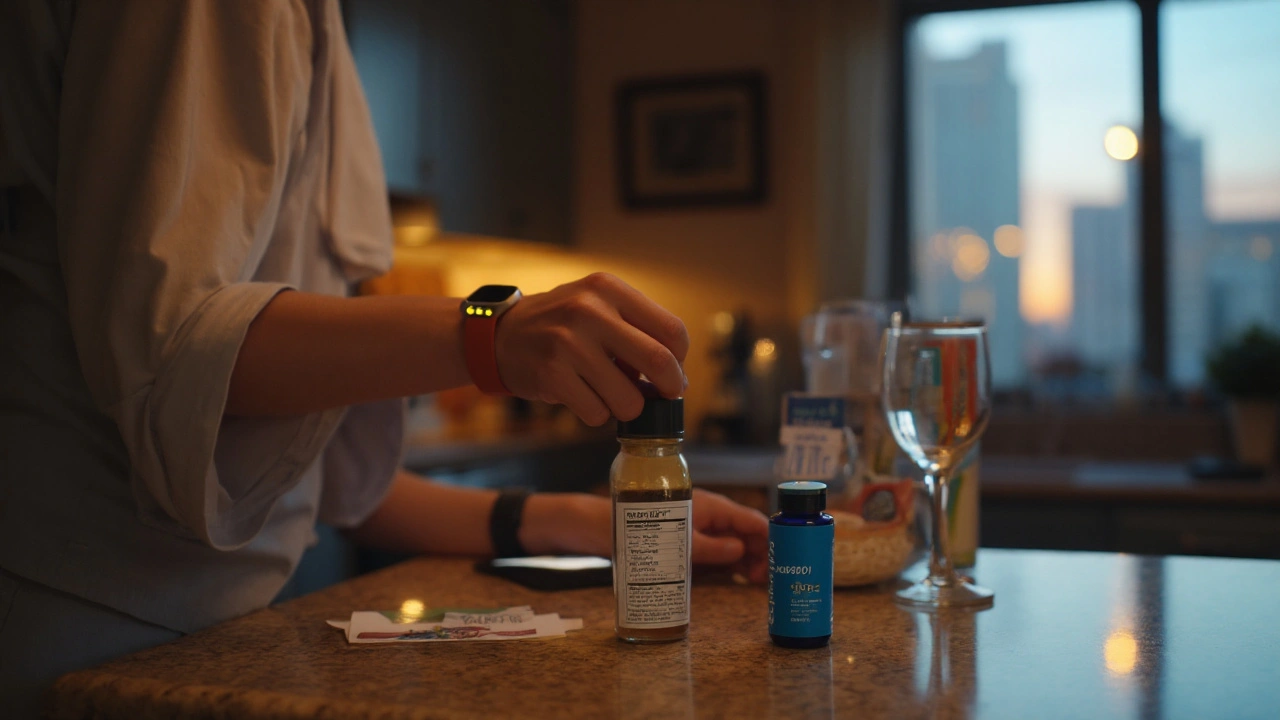
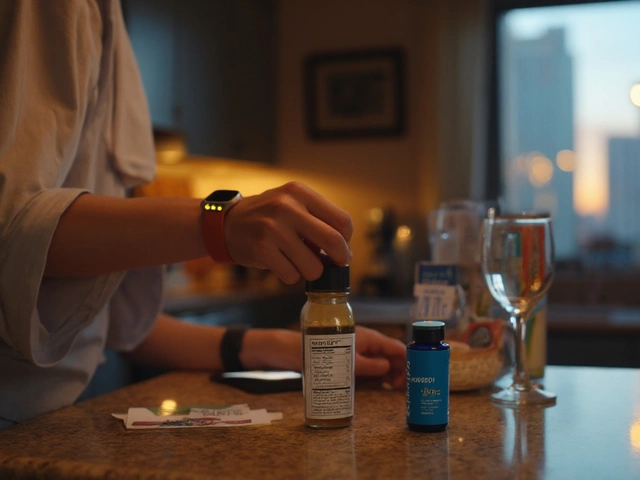

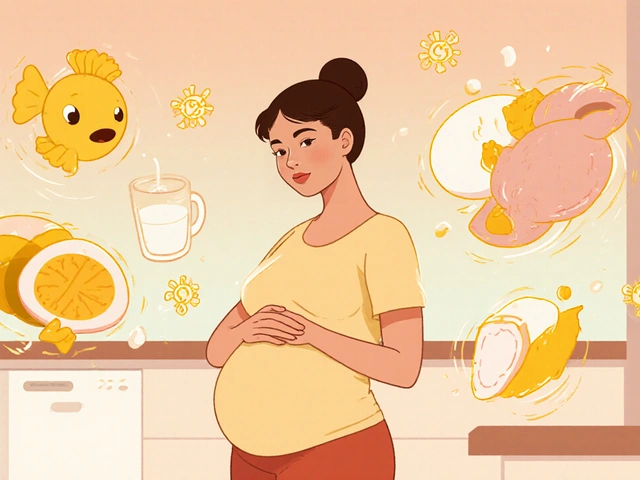
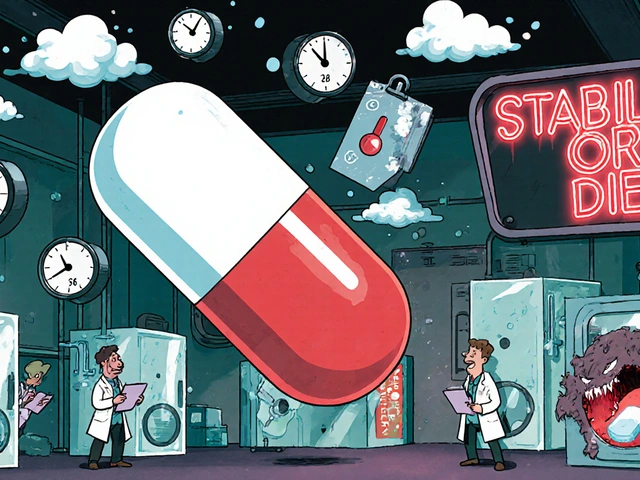
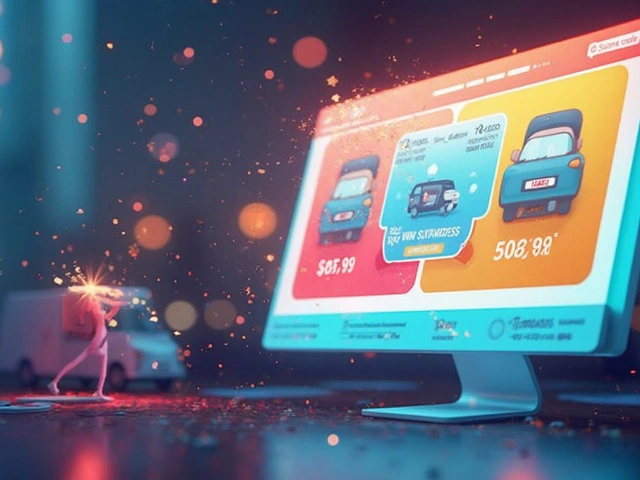

Sarah Aderholdt
September 5, 2025 AT 19:12Bottom line: if you’ve taken naproxen today, ditch the drinks – even a single sip adds unnecessary pressure on your gut and kidneys.
Phoebe Chico
September 5, 2025 AT 19:29Yo, who needs a boring “no‑mix” rule when you can just “sprint” through the night with a pint? Nah, bro, the blood‑sucking combo of booze and naproxen is a recipe for disaster, like mixing fireworks with gasoline – spectacularly bad.
Larry Douglas
September 5, 2025 AT 19:54Let’s break down the pharmacology in plain terms. Naproxen inhibits cyclo‑oxygenase enzymes, which reduces prostaglandin synthesis and consequently protects the stomach lining less effectively. Alcohol, on the other hand, directly irritates the gastric mucosa and raises gastric acid secretion. When both agents are present, the protective barrier is compromised on two fronts, dramatically increasing the chance of a bleed. The risk is not merely additive; several epidemiologic studies have reported a multiplicative effect, especially in patients over sixty or those with a history of ulcers. Kidney perfusion suffers as well, because NSAIDs constrict afferent arterioles while alcohol induces dehydration, together lowering glomerular filtration. Blood pressure can also climb, as both substances have modest hypertensive properties that stack. If you are on anticoagulants or antiplatelet therapy, the bleeding potential skyrockets even further. Timing matters: naproxen’s half‑life of roughly twelve to seventeen hours means its effects linger well beyond the last dose. A single standard drink might seem harmless, but it still adds ethanol‑mediated vasodilation that can tip the balance. For a light‑drinker who spaces alcohol and naproxen by at least twenty‑four hours, the risk drops to near baseline, though it never disappears completely. In high‑risk groups – the elderly, chronic kidney disease patients, or those on SSRIs – even a modest amount of alcohol can be the straw that breaks the camel’s back. The safest strategy is to avoid alcohol entirely while on regular naproxen therapy. If you must drink, consider swapping naproxen for acetaminophen, provided you have no liver disease. Topical NSAIDs offer localized relief with minimal systemic exposure and are far more forgiving. Finally, be vigilant for red‑flag symptoms like melena, hematemesis, or unexplained dizziness, and seek care without delay.
Michael Stevens
September 5, 2025 AT 20:07Great rundown, Larry. If you’re looking for a quick fix on a night out, a cold compress or a short walk can sometimes tame that nagging ache without reaching for a pill.
Ann Campanella
September 5, 2025 AT 20:27Skip the booze, period.
Desiree Tan
September 5, 2025 AT 20:42You’re right, Ann, but let’s give people a game plan: if they’ve already had a drink, wait at least twelve hours before touching naproxen, hydrate, and opt for acetaminophen if their liver can handle it.
Andrea Dunn
September 5, 2025 AT 20:54Honestly, the pharma giants don’t want you to know that mixing naproxen with booze is a covert way to keep us dependent 😐. Stay safe, stay skeptical 😜.
Erin Johnson
September 5, 2025 AT 21:12Oh wow, another “don’t mix” post – how original! 🙄 In all seriousness, the science is solid: NSAIDs + alcohol = GI bleed risk, plus kidneys don’t appreciate the double whammy. If you’re daring enough to ignore it, at least have an antacid on standby, because you’ll thank yourself when the stomach starts growling.
Rica J
September 5, 2025 AT 21:25yeah, ur right bout the risk but u kno we cant all stay sober 24/7. just try 1 drink & take napro with food, thx!
Linda Stephenson
September 5, 2025 AT 21:47Just a friendly reminder that if you’ve got any of the high‑risk factors listed – age, previous ulcer, blood thinners – it’s best to keep alcohol out of the picture entirely while on naproxen.
Sunthar Sinnathamby
September 5, 2025 AT 22:02Exactly, Linda! And for anyone looking for an alternative, the diclofenac gel works wonders on joint pain without the systemic side effects – perfect for a night out.